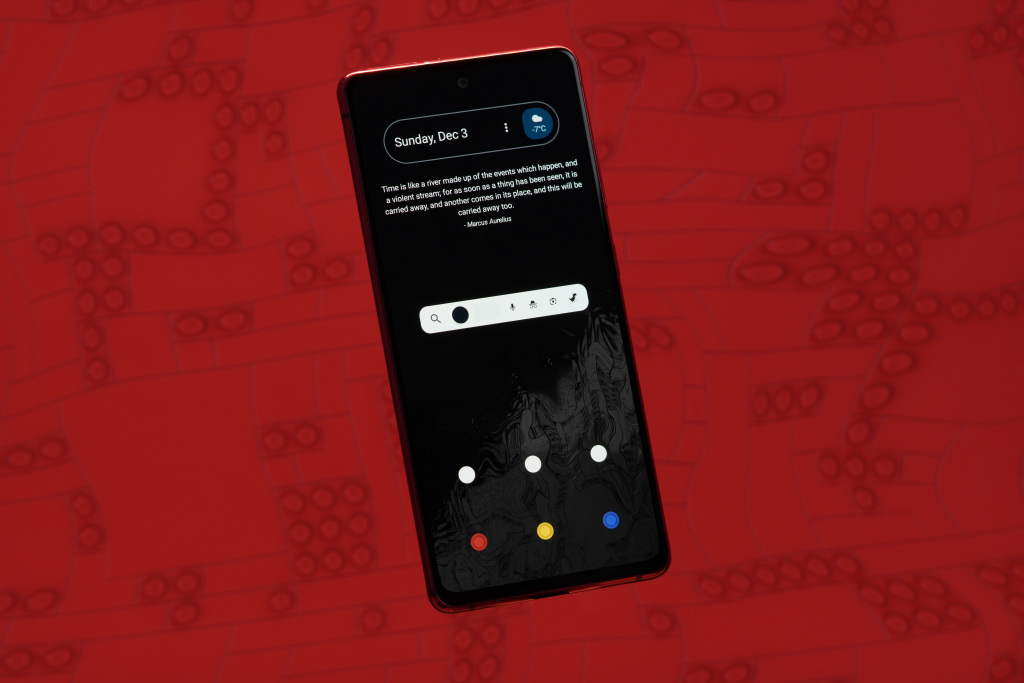Introduction
Parallel to the Phone Setup YouTube Video that I uploaded, I wanted to write a bit about digital decluttering, mainly relating to our smartphones. On average, we seem to daily spend 3-5 hours on our smartphones. Personally, I tend to land somewhere in the middle of that estimation. On days where I’m not mindful about screen time, I have even reached 6 hours, and on more productive days it can be as low as 1.5 hours. I don’t know how these numbers sound to you, but spending a quarter of our time awake holding a device, and looking at its screen sounds ludicrous. However, I fully understand it. Our phones are unbelievably powerful pieces of technology. Describing it as a device with a screen is thinking in a low level of resolution, so to speak. Rather, our phones are portals to a global network, with an ocean of all kinds of content to be immersed in. Setting boundaries for this kind of technology can be difficult, but I believe that we can have a healthy relationship with tech, and in this text, I attempt to outline how this can be achieved.
What Do You Want Your Phone To Do?
Ask yourself what you seek in a phone. In this context I’m not talking about the specifications and features of particular phone models, or whether you’re team Apple or Android. I did write a bit about this in a previous text, but in this case, I’m more concerned with the question of what purpose we want our phones to fill. Phones used to be just for calling and texting, but now these pocketable devices have transformed into very capable communication and media machines. Because our phones can do so many things, it can be challenging to define what we want to use them for.
I think that in order to find balance, we can try walking on both sides of the seesaw. If you’re confused about how much you should optimally use your phone – probably because you’ve identified an excessive amount of screen time – try using it less than you think is optimal. In this way, you will experiment in which situations and to which means the phone is useful. When I tried this balancing act, I realized that it may not be optimal to have my phone immediately accessible at my workspace, but that it makes sense to bring it when I’m away from home. I also experienced the feeling of wanting to reach for the phone due to habituation, versus intentionally picking up the phone for productive purposes.
Decreasing Screen Time
If we want to decrease our screen time, we must first know what we’re working with. The screen time trackers built into the settings, or through a third-party app, can give you a detailed insight into how long the screen is awake, and the apps it displays. Going through this data can allow us to reflect on which apps we might overuse, and how much of the time we spend on our phones is actually useful. Zero screen time wouldn’t be productive for me, because then I wouldn’t be able to create content and do a lot of the work I do. But the multiple hours of YouTube and Instagram that I’ve had on certain days in the past exceeds “creating content”, and it’s more time than I need to view the posts I might want to see for inspirational, educational or entertainment purposes.
When we have measured a baseline of phone usage, here are some of the tricks I’ve used to limit it. I have successfully tried all these methods at one point, and I still utilize some of them.
- Use a grayscale filter. It looks like a lot of phones have inbuilt settings to turn your screen black and white, and maybe with a quick toggle so that you can easily turn it on or off. Why would this be useful? Think about it; these tech and media companies are not stupid. They’ve intentionally designed their products in a way to make them maximally appealing, and therefore maximally addictive. If a major visual element of that experience – the colors – goes away, you’re left with a panel that you’re not really used to look and interact with. Being void of colors, the experience will be comparatively dull. The Instagram feed will look like an old newspaper, and it will take some extra thinking to navigate through your phone properly. Aside from the experience being less stimulating, the gray-scaled screen can also act as a reminder to be mindful of your screen time. When you’re greeted with a black-and-white screen, you might stop for a moment to ask yourself if there is an intentional action you want to perform, or if you just seek comfort and pleasure.
- Re-arranging apps on your phone can counter some of the habituated routines of mindlessly going through a set of apps. When I had my social media apps neatly organized in a folder on my home screen, convenient and easily accessible, I could just mindlessly open them. I then switched to having the apps scattered in the app drawer, and now most of them are only accessible through a search. This resistance makes the use more intentional, so when an app becomes addictive, try switching its place. Perhaps you’ll find yourself clicking on the spot where it used to be, and catching yourself performing an automated behavior. Then you’ll proceed to make a more conscious decision about if you should actually open the app.
- Set up no-phone zones, and similar rules. We are habitual creatures, so if we repeat certain behavior at a certain place, a certain time, or when we’re hit with a certain feeling, these cues can develop into triggers for this behavior. To counter this, we can set certain limitations for certain cues. Perhaps you don’t use your phone before a certain time of the day, perhaps you don’t use your phone at the dinner table, or perhaps you don’t open social media apps in school or at the job.
- Play around with the notification settings. It’s not obvious which notifications actually make you check your phone less vs. more. I found that disabling the “someone liked your post” notifications on my social media decreased my screen time, but disabling message notifications on social media had the opposite effect, because I’d constantly check the apps to see if I’d received any replies in conversations. I also disabled all notifications from games, as I don’t need to know when my dragons are ready for a raid. Just like managing mails in your inbox, you’ll eventually figure out which notifications you find yourself constantly swiping away.
- Have other things to do. If I don’t have short-term goals and tasks, this makes me much more prone to stay on my phone. Reversely, I know that if a lot is demanded from me, often socially and professionally, I’m often able to rise to the occasion and perform many of the routines and tasks I’d ideally do without this external pressure. This is for me the biggest contributing factor to when my screen time dips. It seems that a solution to not wasting time is to not have much time to waste; to have obligations and meaningful activities to do instead.
- Be aware that phone usage can be a symptom of a problem, and not necessarily the problem itself. Therefore, be careful not to replace screen time with something else that’s unproductive. Ask yourself why you want to decrease your phone usage. What is your phone stopping you from doing? What adventures could be better lived with less technology?
Outro
Ever since I got my first phone when I was 10 years old, I’ve been fascinated by smartphone technology. Although I don’t think I used my phone too much, and especially not social media compared to most of my peers, I could certainly spend a lot of time immersed in the content on the screen – whether it was on a 2.8- or a 6.5-inch screen. While that fascination remains, I’m not as excited about phone launches anymore, and I didn’t go for the bleeding edge offers when I set out to buy a new phone. I guess that I’ve sufficiently defined the purposes I want to use my phone for, and made the conclusion that my current phone fulfills them. I’ve played around with the software for a long time until I’ve now developed a setup that strikes a good balance between restricting unnecessary use, promoting productive apps, and functioning like a responsible media machine. I don’t want you just “consume” my “content”, but if you want to see how I’ve set up my phone – the one in the picture – you may make an intentional decision to do so, by watching this YouTube Video. Whatever you decide to do, I want to thank you for checking in, and I hope that this has been time well spent. Together we learn how to use technology more intentionally.



